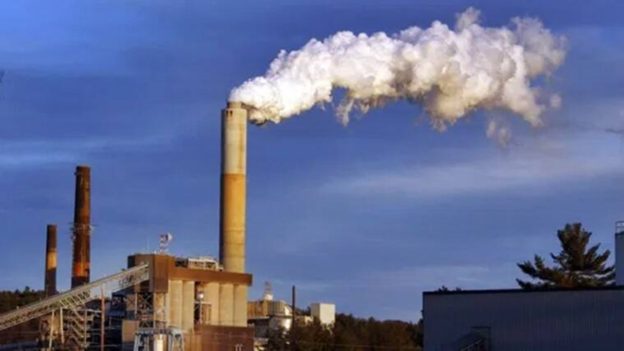While India should take a non-negotiable stance on its 2070 net-zero target at COP28, resisting pressures to advance it, given the scale of transition required for a country as large and populous as India, even the 2070 target is quite ambitious.
The recently issued G7 Hiroshima Leaders’ Communiqué has placed a new demand on developing countries. The communiqué has urged all ‘major economies’ (including India) to ensure that their greenhousee gas (GHG) emissions peak no later than 2025, and that they attain a net-zero emissions status latest by 2050. The new G7 ‘wishlist’ is obviously devoid of realism and demands strong objections from the Global South at the UNFCCC COP28 meeting in Dubai later this year. Notably, at COP27, India formally announced its long-term strategy to transition to a low emissions pathway, committing to reduce the GDP emission intensity by 45% (compared to the 2005 level) by 2030, and become net-zero by 2070.
Post COP27, India has taken significant steps in its transition toward a low-carbon economy. For example, the Energy Conservation Amendment Act 2022, which specifies the minimum share of consumption of non-fossil sources for the nine most energy-intensive sectors, demonstrates India’s steadfast commitment to the transition goals. Under the same Act, India has increased the scope of the Energy Conservation and Sustainable Building Code by including offices and large residential buildings, apart from the commercial buildings already covered under its ambit. In January 2023, the government approved the National Green Hydrogen Mission with an outlay of Rs 19,744 crore from FY24-FY30. In the FY24 Union Budget, there has been a 78% jump in FAME-II subsidies to promote the adoption of EVs. All such policies and steps exhibit the right intentions and actions, consistent with our global commitments.
The communiqué, perhaps deliberately, fails to recognise such efforts and, quite unjustly, expects countries in the global south to bear a disproportionate burden of global climate change and energy transition goals. Keeping aside the debate on who should assume the historical responsibility for emissions, the global north needs to show greater maturity and sensitivity to the development challenges, energy access issues, and financial constraints that countries like India face while implementing this transition process. For developing countries, a ‘just transition’ necessitates a careful balance between the urgency to address climate change issues and the need to minimise social and economic disruptions.
While India should take a stern non-negotiable stance on the 2070 net-zero target in the upcoming COP28 meet, given the scale and scope of transition required for a country as large and populous as India, the 2070 target is undoubtedly ambitious. Therefore, policymakers must address the internal challenges that impede such a fundamental shift in India’s energy landscape.
First, scaling up our renewable energy infrastructure and technology is crucial. While there has been substantial growth in solar and wind power capacity in the past decade, further development is required to support the transition from fossil fuel dominance to a non-fossil fuel power portfolio. According to Central Electricity Authority (CEA), an additional investment of at least `2.44 trillion is needed to build the necessary transmission infrastructure spanning approximately 50,000 circuit kilometres, to support the envisioned 500GW of renewable energy capacity by 2030.
Second, considering India’s expected position as the world’s third-largest economy by 2030 and the concomitant surge in energy demand, improving energy efficiency is vital to meeting India’s 2070 commitment. According to International Energy Agency (IEA), implementing energy-efficient practices in the industrial and building sectors could save up to 7.5 EJ by 2040. Besides, strong coordination between the central and state governments is critical to driving energy efficiency improvements from initiatives such as the Perform, Achieve, and Trade (PAT) scheme for industries, appliance standardisation, labelling programs, and building codes for large residential and commercial structures.
Third, regulatory reforms are necessary to address the persistence of cross-subsidies in electricity tariffs, which has hampered the development of a competitive and efficient energy market, and is the fundamental reason for the weak finances of the discoms. By promoting tariff rationalisation, India can attract domestic and foreign investments in the renewable energy sector, thus fostering a business-friendly environment and galvanising international cooperation.
Fourth, it is vital that states also assess and declare their respective net-zero targets. Given the federal nature of our polity, with energy being a concurrent subject, it is crucial to define and align short-term sub-national transition milestones with long-term national goals. This will necessitate close coordination between the Centre and states, including on capacity-building and resource-sharing initiatives.
Also read: The true picture on the economy
Finally, fulfilling India’s 2070 commitment critically hinges on its ability to garner international climate finance. G7 communiqué-like demands notwithstanding, bridging the funding gap for India’s ambitious clean energy projects and technology adoption will require enhanced international cooperation and innovative financing mechanisms. This will be possible only with an open mind to negotiations, supplemented by policies that direct climate finance towards priority areas such as renewable energy, energy efficiency, and sustainable infrastructure development. Targeted investments in these areas will enable India to decarbonise its economy and reduce greenhouse gas emissions on time.
India stands at crucial crossroads in its journey toward a low-carbon future. As it navigates the complexities of global forces while addressing internal challenges, India’s commitment to a sustainable and just transition will shape its own future and lead the world toward a greener tomorrow.
https://www.financialexpress.com/opinion/indias-path-to-a-low-carbon-future/3120629/





